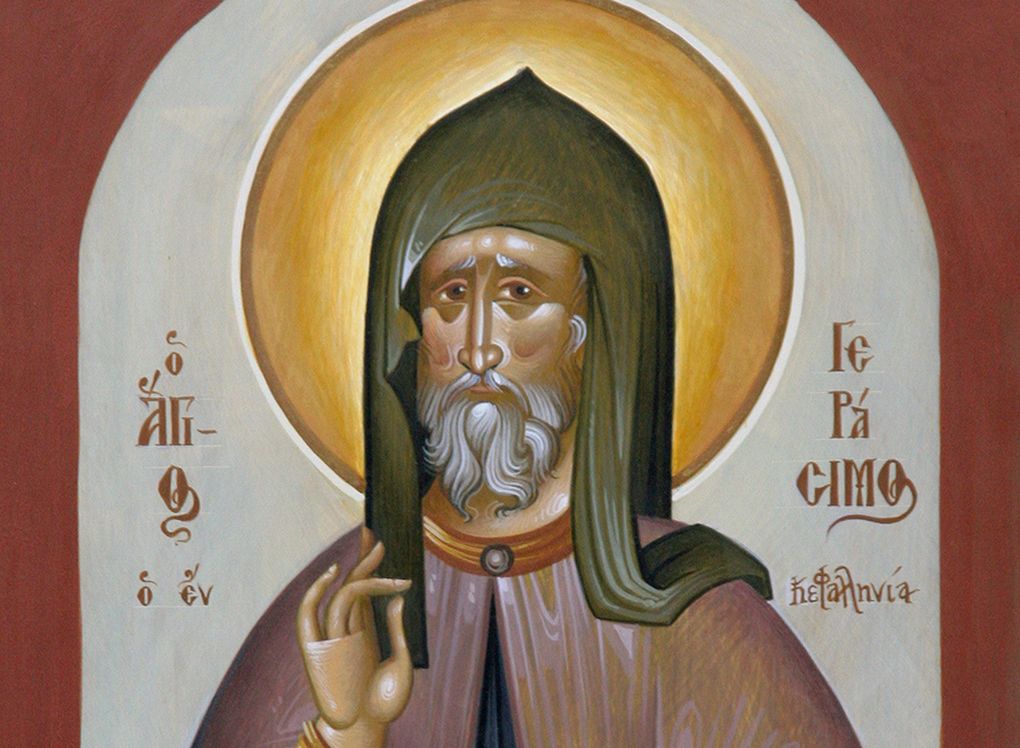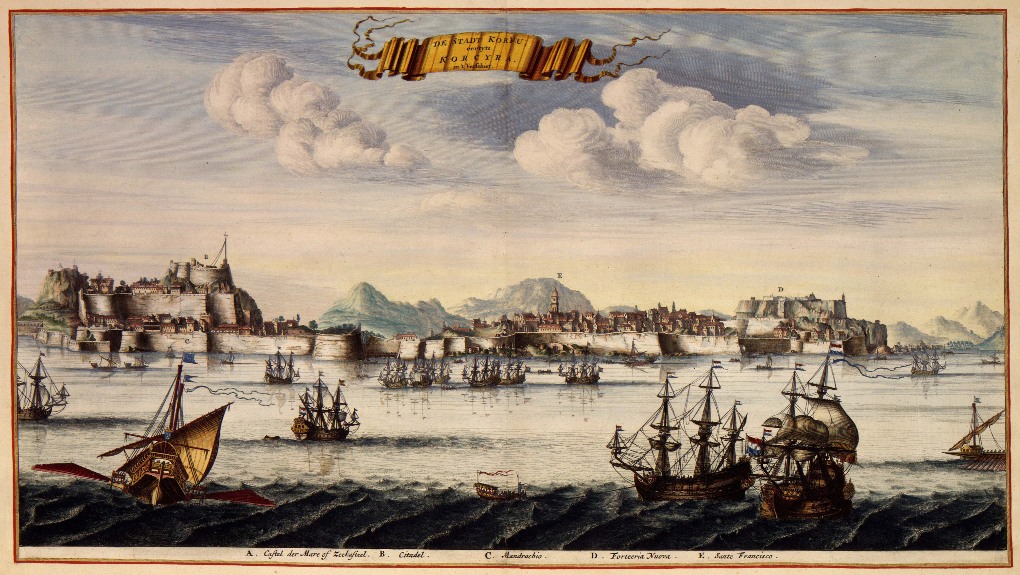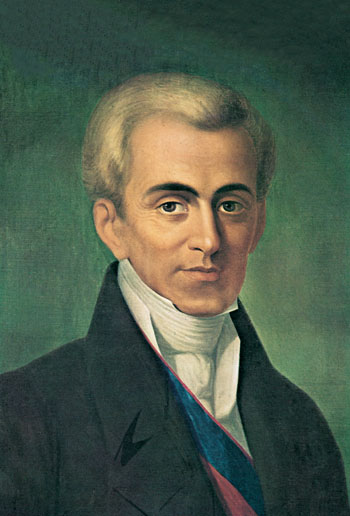From hagiographies and poems, to votive offerings and festivals, the figure of the Saint remains alive in every aspect of Cephalonian life..
In Kefalonia, faith in St Gerasimos of Kefalonia is not just an ecclesiastical affair; it is an element of the island's collective identity, deeply rooted in the life and memory of the people. The saint, who died in 1579 and was officially declared a saint in 1622, is commemorated with two major feasts: on 16 August, the day of his death, and on 20 October, the day of the recollection of his relics. The events, centred on the monastery in Omala, attract every year a large number of believers from all over Greece and the Greek community.
Every year, on 16 August, Kefalonia celebrates its patron saint with devotion and solemn splendour. The day begins with a Divine Liturgy at the monastery of the Saint in Omala - the most important religious monument of the island - and culminates with the traditional procession of the holy tabernacle. Thousands of believers - locals and visitors - come to venerate the indestructible relic of the Saint, which is a precious treasure for the Kefalonians. The philharmonic band accompanies the procession, while the day ends with folk festivals in the surrounding villages, food, wine, Kefalonian songs and dances. It is a day when spiritual devotion meets communal joy.
The name Gerasimos is a landmark in itself: you will rarely meet a family in Kefalonia without at least one Gerasimos or Gerasimoula. It is not only a matter of tradition, but also an act of daily connection with the spiritual heritage of the island. The Saint is not for the Kefalonians a mere figure of Orthodoxy; he is a protector, healer and silent companion.
But beyond his devotional dimension, St Gerasimos has also left a strong imprint on art - hagiography, painting, literature and popular creation. The artistic depictions of the saint, from the official hagiographies to the most humble popular versions, tell a story of faith and memory that transcends the boundaries of time.
The icon of the Saint
The most recognizable figure of the Patron Saint of Kefalonia is the one that survives in hagiographies: an ascetic with a stern look, a calm figure and a slightly turned back, dressed in a dark monastic robe. He is often depicted holding a cross or holding the New Testament, symbols of his spiritual witness.
A particular element that appears in several of his depictions is the presence of a lion. This is a reference to the tradition according to which the Saint had healed an injured lion, which faithfully followed him for the rest of his life. The lion, a symbol of strength and courage, takes on a spiritual character when it coexists with Saint Gerasimos - it becomes a symbol of the calm strength of faith and religious serenity.
The Ionian School and the influence of the West
The iconography of Saint Gerasimos does not remain purely Byzantine. The Ionian School, influenced by the Western painting tradition due to the Venetian domination of the Ionian Islands, introduced new elements in the depiction of the saints: more natural poses, more realistic features, rich colours and perspective. The icons of Saint Gerasimos are part of this context, which highlight not only his spirituality but also his humanity.
Artists such as Andreas Karantinos (1780-1823) and Georgios Nomikos (1776-1851), representatives of the Ionian art, combined respect for the Byzantine tradition with Western-style technique, offering a result that moves and inspires the pilgrim.
Gerasimos Pitsamanos: A Cephalonian of Art
Special mention should be made of Gerasimos Pitsamanos (1787-1825), an architect, painter and portrait painter, who was born in Argostoli. Pitsamanos was educated in Italy and adopted a European style, but his love for his homeland and his roots was reflected in several works of a religious or local nature. His influence on the generation of Cephalonian painters who became involved in hagiography is undeniable. His artistic vision influenced the depiction of the Saint in both murals and iconographic drawings of monasteries.
The Saint in folk art and relics
The figure of Saint Gerasimos has inspired not only official painters and hagiographers, but also lay craftsmen, woodcarvers and artisans. In many parishes and homes of Kefalonia one can find wood-carved portable icons, hagiographies on canvas, woven and handmade embroideries depicting the Saint.
The monastic relics, such as old icons, crosses and even candles bearing the name of the saint, bear witness to the long-standing relationship of the people with their patron saint. Each family is followed by a souvenir, a vow, a personal object associated with the saint.
Memory as a living act of art
The presence of Saint Gerasimos in art is not just a cultural imprint; it is proof that faith can be transformed into creation. From his image in the iconostasis of a church to the wood carving in a peasant's living room, from the verse of a poem to the humble candle burning incessantly in Omala, all make up a mosaic of love, hope and gratitude.
In Kefalonia, the memory of the Saint is not limited to religious ritual. It is part of everyday life, of artistic expression, of collective memory. And if art is - as it is said - a form of immortality, then Saint Gerasimos is visible in every corner of the island: in the faces of the people, in the works of the artists, in the colours of the painters, in the silent prayers of the poets.




